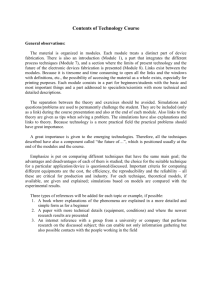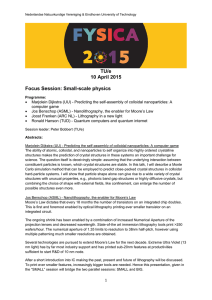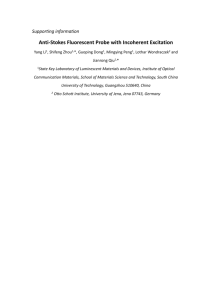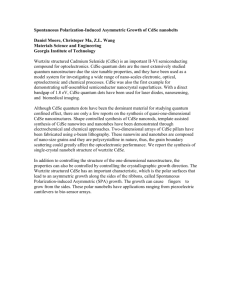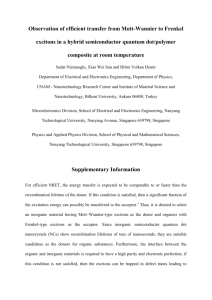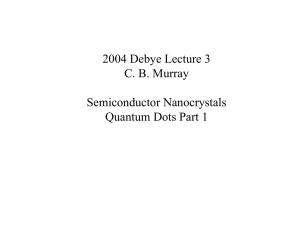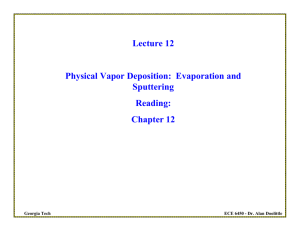support file
advertisement
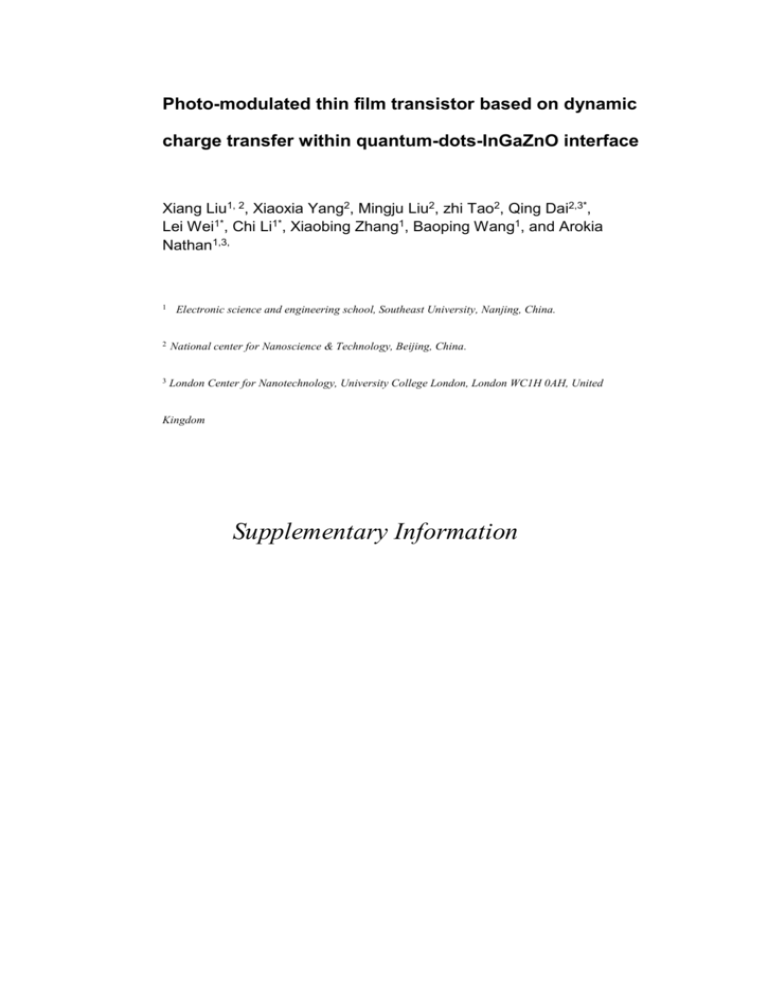
Photo-modulated thin film transistor based on dynamic charge transfer within quantum-dots-InGaZnO interface Xiang Liu1, 2, Xiaoxia Yang2, Mingju Liu2, zhi Tao2, Qing Dai2,3*, Lei Wei1*, Chi Li1*, Xiaobing Zhang1, Baoping Wang1, and Arokia Nathan1,3, 1 Electronic science and engineering school, Southeast University, Nanjing, China. 2 National center for Nanoscience & Technology, Beijing, China. 3 London Center for Nanotechnology, University College London, London WC1H 0AH, United Kingdom Supplementary Information 1. Device fabrication for light-induced quantum-dots- InGaZnO thin film transistors 1.1.1. Materials. Silicon wafer (p<100>, <0.005ohm·cm) with 2 inch in diameter and 430±20μm, and 300nm of silicon oxide layer on polished side was used as the gate electrode and insulator in this experiment. Silver (4N) and Ti (4N) target were used as Source/drain electrode and ohmic contact layer for sputtering process. A ceramic target which is 6 inch diameter and consists of In2O3: Ga2O3: ZnO at a ratio of 1: 1: 2 supplies to the substrate, which was formed on the insulator by sputtering process as the active layer for thin film transistors, as shown in figure S1 and figure S2. The ligand (Tri-n-octylphosphine Oxide (TOPO)) modified CdSe@TOPO QDs (5mg·mL-1 in n-hexane, 4.9nm grain size, quantum field:50%, 585nm peak, JIAYUAN ltd.) were coated as the photo-excited layer on the top of active layer by spin coating process (as can be seen in figure S1). 1.1.2. Fabrication, characterization and test instrument. The magnetron sputtering was carried out by ACS-4000-C4 (ULVAC Japan) at 4×10-5Pa,20rpm and room temperature. The microstructure of the device and the material is characterized by scanning electron microscope (SEM, Hitachi S4800) and Transmission electron microscope (TEM, Tecnai G2 F20 U-TWIN). I−V characteristic curve and pulse response curve is measured by Keithley 4200-SCS. Charge transfer phenomenon is tested by time-resolved spectrofluorometer (FL3-21-IHR320-TCSPC) and the Photoluminescence curve is obtained by LS55 (Perkin Elmer Instruments (shanghai) Co.Ltd.). The light-bias is applied by the power-adjustable LED lamp and the power density of the device planer is measured by multi-wavelength optic intensitometer DES-100H (U.S.A SP Co.Ltd). UV lithography was utilized in the electrode formation process and channel definition by a high-resolution MJB4 (800nm precision, Suss MicroTec Lithography GmbH). 2. Device fabrication process Silicon wafer with 300-nm-thick SiO2 insulator was sonicated in acetone solution and then in isopropanol solution for 15 min each. The wafer was washed again by DI water, then the nitrogen gas was used to blow-dry. And the surface of insulator side was treated to be more hydrophilic and easy sticky by Surface plasma treatment. Then Ti (5nm) and Ag (50nm) were deposited after Lithography, and the wafers were washed in acetone solution to lift off all the resist. After that IGZO-film (served as active layer) was formed on the channel by RF sputtering at room temperature (the practical measuring photoluminescence spectra of InGaZnO layer can be seen in figure S3). Finally, CdSe quantum dots were coated on the top of the thin film transistor’s channel by drop casting, cross-linked method and annealing at 200℃ to improve the bonding of connection between the ligand modified at the vicinity of quantum dots and InGaZnO active layer. Fig.S1. The overall cross-sectional SEM image of the device and 4.9nm CdSe quantum dots’ TEM image(inset). Element CK OK ZnL GaL SeL SiK CdL InL Matrix Wt% 09.37 20.50 09.07 11.15 03.89 33.84 06.13 14.55 Correction At% 21.04 34.57 03.74 04.32 00.93 32.51 01.27 03.42 ZAF Figure S2. The element ratio measured by Energy dispersive spectrometer. Figure S3. Practical measuring photoluminescence spectra of InGaZnO layer
